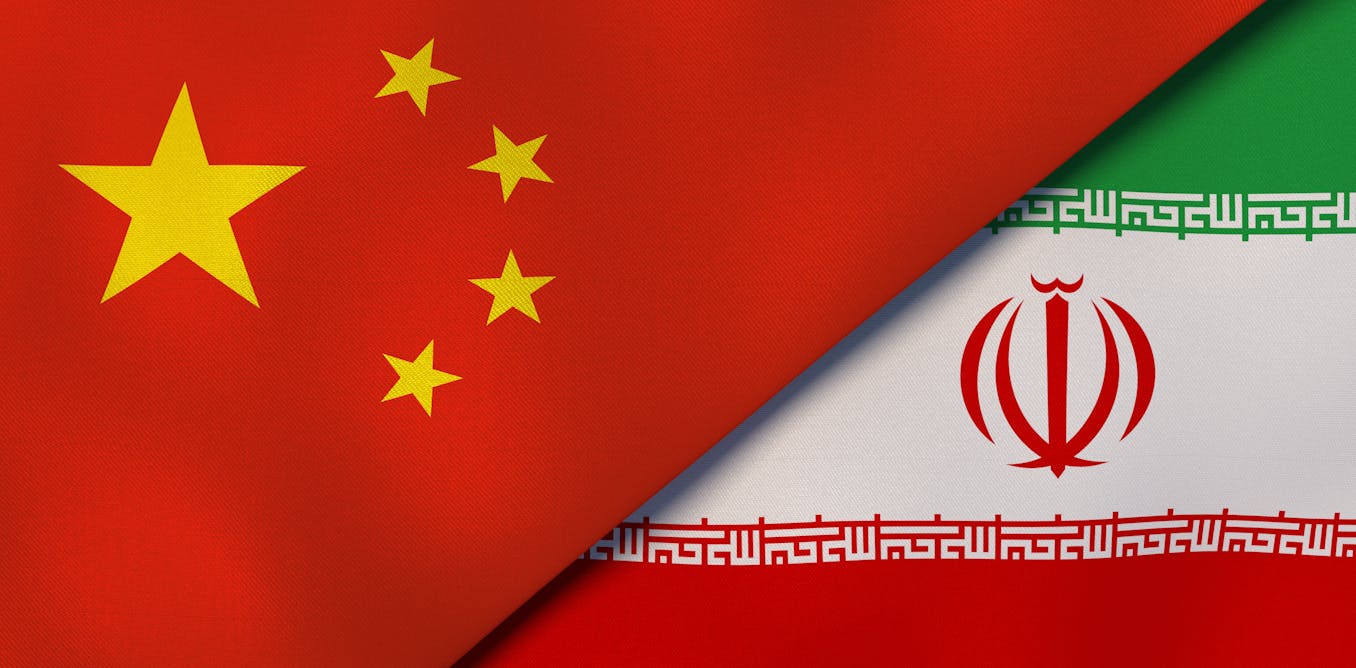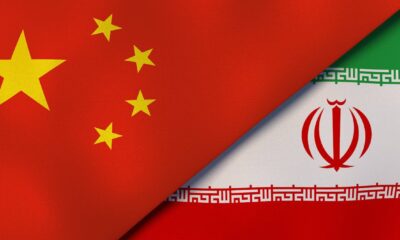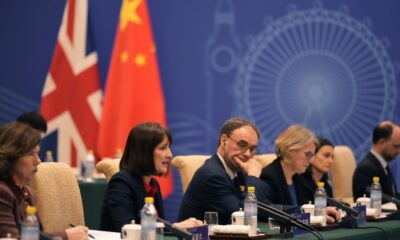China
Changing economic trends in Taiwan

Author: Min-Hua Chiang, NUS
Taiwan’s economic growth has long been based on exporting intermediate goods to mainland China for final assembly, but this is now showing signs of change. Taiwan’s monthly exports to China and Hong Kong have registered negative growth since November 2018 according to Taiwan’s official statistics.
In January–June 2019, Taiwan’s exports to China and Hong Kong shrank by 8.8 per cent compared to the same period in 2018. In comparison, Taiwan’s exports to the United States grew by 17.4 per cent. Overall exports declined by 3.4 per cent during the same period. As a result, China’s share in Taiwan’s total exports declined from 41 per cent in 2017 to less than 39 per cent in the first half of 2019. China’s falling significance was balanced by the growth of exports to the United States from 12 per cent to 14 per cent during the same period.
Taiwan’s decreasing investment in China explains the shrinking exports to the country. Although China remains Taiwan’s largest outward investment destination, its importance has dropped to 37 per cent in the first half of 2019 from its peak of 84 per cent in 2010.
Taiwan’s decreasing investment in and export to China has been caused by China’s transformation towards a more consumption-based economy. The growing trade dispute between the United States and China has accelerated the shift in Taiwanese investment away from China. In 2016, 8 out of the top 10 US-bound exporting companies in China were Taiwanese firms.
Taiwan’s declining investment in China did not boost its investment in developing countries in Southeast Asia as China and Southeast Asia are within the same supply chain networks — Southeast Asian countries supplied raw material and intermediate goods for final assembly in China. Trade interdependencies mean that Taiwanese firms’ withdrawal of their factories from China might negatively impact their investment in Southeast Asia.
Some Taiwanese firms choose to invest at home in the face of US trade retaliation against Chinese products. From January–June 2019, the total return on investment from China amounted to over NT$440 billion (about US$14 billion). This considerable return sustained Taiwan’s economic growth despite falling exports.
The Taiwanese government tried to reduce Taiwan’s investment in China before in the 1990s but the result was not fruitful. The opening of US markets to Chinese goods following US–China reconciliation underpinned export-oriented investment in China. As most Taiwanese exports produced by Taiwanese firms in China are destined for the US market, Taiwan has transmitted its economic reliance on the United States to intermediary China.
Unlike president Lee Teng-hui (1988–2000), president Chen Shui-bian (2000–2008) realised the prohibition only resulted in extensive hidden investment that the government could not control. He then adopted a relatively open economic policy towards China. When Ma Ying-jeou took office in 2008, he opened Taiwan’s economy a step further to China as he believed greater cross-strait economic integration would rescue Taiwan’s ailing economy.
Ironically, Taiwan’s investment in China started to decrease and its exports to China also became stagnant during Ma’s administration (2008–2016). China’s rising wages and stricter rules for environmental protection explained diminishing investment from Taiwan. China’s industrial upgrading further reduced its demand for intermediate goods from Taiwan. Beyond weak global demand, Taiwan’s wearying investment-driven exports to China also explained its bleak economic performance.
Unlike Ma, current President Tsai Ing-wen vowed to revitalise the economy through diversifying economic relations after she took office in 2016. This comes in the wake of China’s economy facing downward pressure exacerbated by the worsening investment environment and prolonged US–China trade tensions. Tsai’s policy of economic diversification may succeed because it complements the current US economic policy towards China as well as China’s economic structural changes.
The future of Taiwanese investment remains largely contingent upon US–China relations. A complete shift of its supply chain network from China to other countries seem unlikely in the short term. Given China’s huge population, the China market-oriented firms may continue to stay.
US President Donald Trump’s plan to bring manufacturing back to the United States may also delink the traditional US–Asia economic connections where Asia produces and…
Business
China Considers Selling TikTok US Operations to Musk as a Viable Option – Bloomberg

China is considering the sale of TikTok’s U.S. operations to Elon Musk as a potential option, according to a report by Bloomberg.
Potential Sale of TikTok to Elon Musk
Reports suggest that China is considering the sale of TikTok’s U.S. operations to Elon Musk as a viable option. This development follows ongoing scrutiny over the app’s data privacy practices and its links to the Chinese government. Officials believe that a sale could alleviate international concerns and preserve the platform’s presence in the U.S. market.
Strategic Implications
The potential transaction raises numerous strategic implications, not only for TikTok but also for Musk’s other ventures. If Musk were to acquire TikTok, it could enhance his digital footprint and provide new avenues for advertising and user engagement. Conversely, it could pose challenges in managing regulatory compliance and addressing data security issues.
Regulatory Hurdles Ahead
Despite the intriguing prospect of a sale, significant regulatory hurdles remain. Any acquisition would require approval from U.S. authorities, who continue to assess the risks associated with foreign ownership of tech companies. The outcome of these discussions could have widespread ramifications for both TikTok and the broader social media landscape.
Source : China Weighs Sale of TikTok US to Musk as a Possible Option – Bloomberg
China
Essential Insights into NGO Accounting and Compliance in China

China will implement an updated accounting system for non-profit organizations starting January 1, 2026, to standardize financial reporting and enhance management practices. The changes address evolving challenges in the NGO sector, ensuring regulatory compliance and effective donor fund management.
China has recently amended its accounting system for non-governmental non-profit organizations, with the new provisions set to take effect on January 1, 2026. As the number of NGOs continues to grow in the country, understanding the existing and updated requirements is crucial for organizations seeking to maintain regulatory compliance and effectively manage donor funds.
On December 20, 2024, the Ministry of Finance (MOF) unveiled the updated Accounting System for Non-governmental Non-profit Organizations (hereinafter, the “NGO Accounting System”), set to take effect on January 1, 2026.
Among others, the revision of the NGO Accounting System is designed to standardize financial reporting, enhance management practices, and provide a regulatory framework to support the high-quality development of non-governmental organizations (NGOs). As the sector expands and diversifies, new challenges have arisen, such as increasingly varied donation methods, rising foreign investments, and the growing number of NGOs being established. In response to these developments, the updated system aims to address emerging accounting issues and reflect the evolving nature of the sector.
In this article, we provide an overview of the current accounting and compliance landscape for NGOs in China, explore the key provisions of the new NGO Accounting System, and highlight the significant changes introduced in the revision.
In China, NGOs encompass a wide range of organizations, including social service agencies, foundations, nonprofit schools, medical institutions, religious organizations (e.g., Taoist temples, mosques, churches), and various other social service providers. Much like their counterparts globally, NGOs play a crucial role in addressing social, environmental, and economic challenges. These entities, typically nonprofit, are dedicated to causes such as education, healthcare, environmental protection, and humanitarian aid.
China’s legal framework for NGOs is multifaceted, governed by several key laws and regulations:
Accounting for NGOs requires meticulous tracking of funds and compliance with specific regulations and reporting standards to ensure transparency and accountability to donors, stakeholders, and the public. Unlike the Accounting System for Business Enterprises (ASBE, commonly referred to as CAS), the Accounting System for NGOs imposes unique requirements for handling various types of donations, including asset and labor donations, as well as the management of entrusted agency business, where the NGO acts as an intermediary to transfer assets to a designated beneficiary. The system also differentiates between restricted and unrestricted net assets, outlines specific classifications for the costs associated with business activities, and includes additional disclosure requirements in the financial notes. As more NGOs establish a presence in China, these standards have gained increased attention in recent years.
| This article was first published by China Briefing , which is produced by Dezan Shira & Associates. The firm assists foreign investors throughout Asia from offices across the world, including in in China, Hong Kong, Vietnam, Singapore, and India . Readers may write to info@dezshira.com for more support. |
Read the rest of the original article.
China
The year ahead in the Middle East: A weakened Iran has big implications for China

Iran’s influence in the Middle East has significantly diminished post-Hamas’s Oct. 7 attack on Israel, impacting its alliances and prompting China to reconsider its relationship with Iran and strengthen ties with other regional powers.
The wheels of history have been turning rapidly in the Middle East over the last year.
For a significant period of time, Iran’s status as a rising power within the region has been regarded as a consistent reality in assessing Middle Eastern geopolitics. But events since the Oct. 7, 2023 attack by Hamas on Israel have seen Iran’s position in the region erode substantially. The balance of power in the Middle East has consequently been irreversibly altered.
A key pillar supporting Iran’s previously powerful status in the Middle East has been its cultivation of the “Axis of Resistance,” a group of Iranian allies across the region that acted together against Israeli and American interests.
The members of the axis, in addition to Iran itself, include Hamas, Hezbollah, Iraqi Shiite militias, the Houthis and Bashar al-Assad’s regime in Syria.
Read more:
Assad’s fall in Syria will further weaken Hezbollah and curtails Tehran’s ‘Iranization’ of region
Axis decimation
Israel’s relentless war in retaliation for the Oct. 7 attack has seen several of the most important members of the axis severely diminished, if not entirely decimated.
Both Hezbollah and Hamas have been humiliated through the destruction of their respective leaderships, and their operational capacities have been reduced significantly.
The largest blow to Iran’s proxy network was arguably the recent ousting of Syria’s Assad, ending a decades-long regime that was regarded by top Iranian strategists as Iran’s most important regional ally.
Syrians celebrate during a demonstration following the first Friday prayers since Bashar al-Assad’s ouster in Damascus’s central square on Dec. 13, 2024.
(AP Photo/Hussein Malla)
The adverse consequences of these developments for Iran’s grand strategy raises questions of how a significantly weakened Iran will affect the world at large, especially in terms of its impact on great power politics in the Middle East.
This undoubtedly represents a welcome development in the United States given the long-standing animosity towards post-1979 Iran among the American foreign policy establishment. But China is likely to have a more nuanced outlook predicated upon its commitment to pragmatic foreign policy maneuvering in accomplishing its top global objectives.
China’s engagement with Iran
As China has grown richer and more powerful in recent decades, it’s turned its attention to increasing its diplomatic clout and economic presence throughout the world. Every region of the planet has been affected by this development, but the Middle East achieved a spot of particular importance for China.
The Chinese government’s motivation to deeply engage in the Middle East has been — and continues to be — driven by several key considerations: the Middle East’s status as a powerhouse of oil production, its strategic geographic location bridging east and west, and its status as a long-standing pillar of American foreign policy.
China has fostered bilateral partnerships across the entire Middle East, but one of its longest regional relationships has been with Iran. In Iran, Chinese authorities saw a country that provided it with an opportunity to help it achieve China’s main objectives in the region.
Liu Zhenmin, China climate envoy, left, and Saudi Arabia Energy Minister Prince Abdulaziz Bin Salman, right, arrive for a plenary session at the COP29 UN Climate Summit in November in Baku, Azerbaijan.
(AP Photo/Rafiq Maqbool)
Post-1979, Iran was inherently anti-American, which meant that China was more likely to be warmly received by Tehran, especially when compared to other regional powers like Saudi Arabia that had relatively warm relations with the U.S.
Perhaps most importantly, Iran could be depended on — to an extent — to stymie American interests in the Middle East given its status as a rising regional power.
This is not to say that Iran became a Chinese client state, but rather that China could provide diplomatic and economic support to Iran as the Iranians used their power to act disruptively in a region of great strategic importance to the U.S.
China’s future moves
Given the motivations underlying deep Chinese-Iranian ties historically, it’s clear that the evaporation of Iran’s clout will likely greatly alter the character of their relationship moving forward.
In a nutshell, a significant portion of Iran’s appeal to Chinese policymakers has disappeared with the near annihilation of its regional network. This will likely encourage China to seek deeper ties with other Middle Eastern heavyweights, like Saudi Arabia and the United Arab Emirates, in accomplishing its goals in the Middle East — chief among them, increasing its regional influence at the expense of the U.S.
But it’s also unlikely China will entirely abandon Iran. While it may focus its most concerted efforts on developing deeper ties with other Middle Eastern countries instead of Iran, China would likely be hesitant to see Iran become even further isolated and therefore more predisposed to behaving aggressively.
China was one of the main behind-the-scenes mediators of the 2015 Iran nuclear deal because it wanted regional tensions to dissipate via Iran’s abandonment of its nuclear program.
Iranian Supreme Leader Ayatollah Ali Khamenei in Tehran, in May 2024.
(AP Photo/Vahid Salemi)
Now that Iran is weakened, it has essentially been boxed into a corner, and has two main options moving forward: either it achieves a rapprochement with the West, or it reinvigorates its nuclear program and acts more aggressively.
While Iran’s ultra-conservative factions that control the levers of power in the country may be tempted to take a more aggressive path, it is very possible China will attempt to use its substantial economic leverage over Iran to encourage them to pursue the rapprochement option.
That’s because the Chinese need the Middle East as a source of petroleum to fuel their economy, and because China doesn’t want to be viewed by the West as an implicit accomplice to a bellicose and destabilizing Iran.
China a moderating influence?
On the contrary, China is currently attempting to repair relations with many western countries given the importance of the West’s markets to China’s ailing economy.
In fact, China may wish to play a role in inducing Iran to strike a deal with the West in the near future, given that it would show the incoming Donald Trump administration — which is notoriously hawkish on China — that it can be trusted and worked with constructively.
At the end of the day, China will seek the path that minimizes the likelihood of full-blown conflict in the Middle East given the importance of the region to the Chinese economy. The country has a strategic opportunity to signal trustworthiness and dependability to the West by working to prevent Iran from choosing a more aggressive path.
This article is republished from The Conversation under a Creative Commons license. Read the original article.






